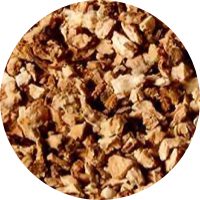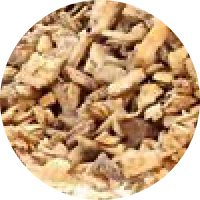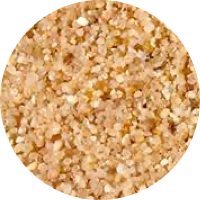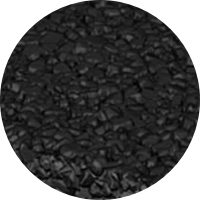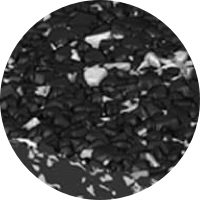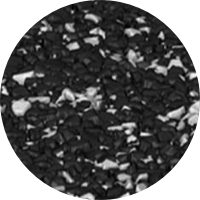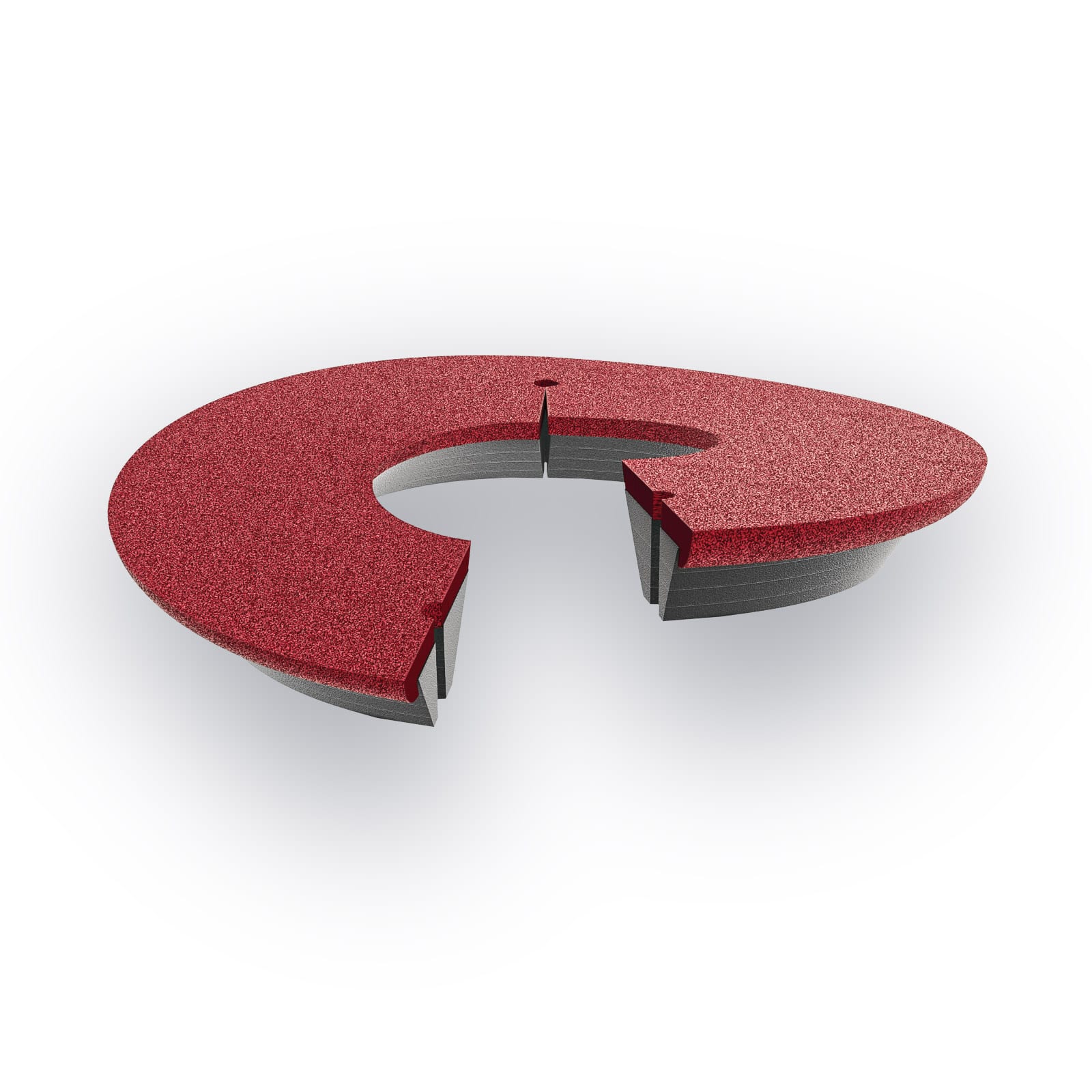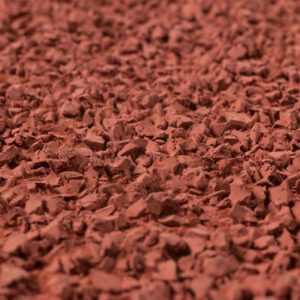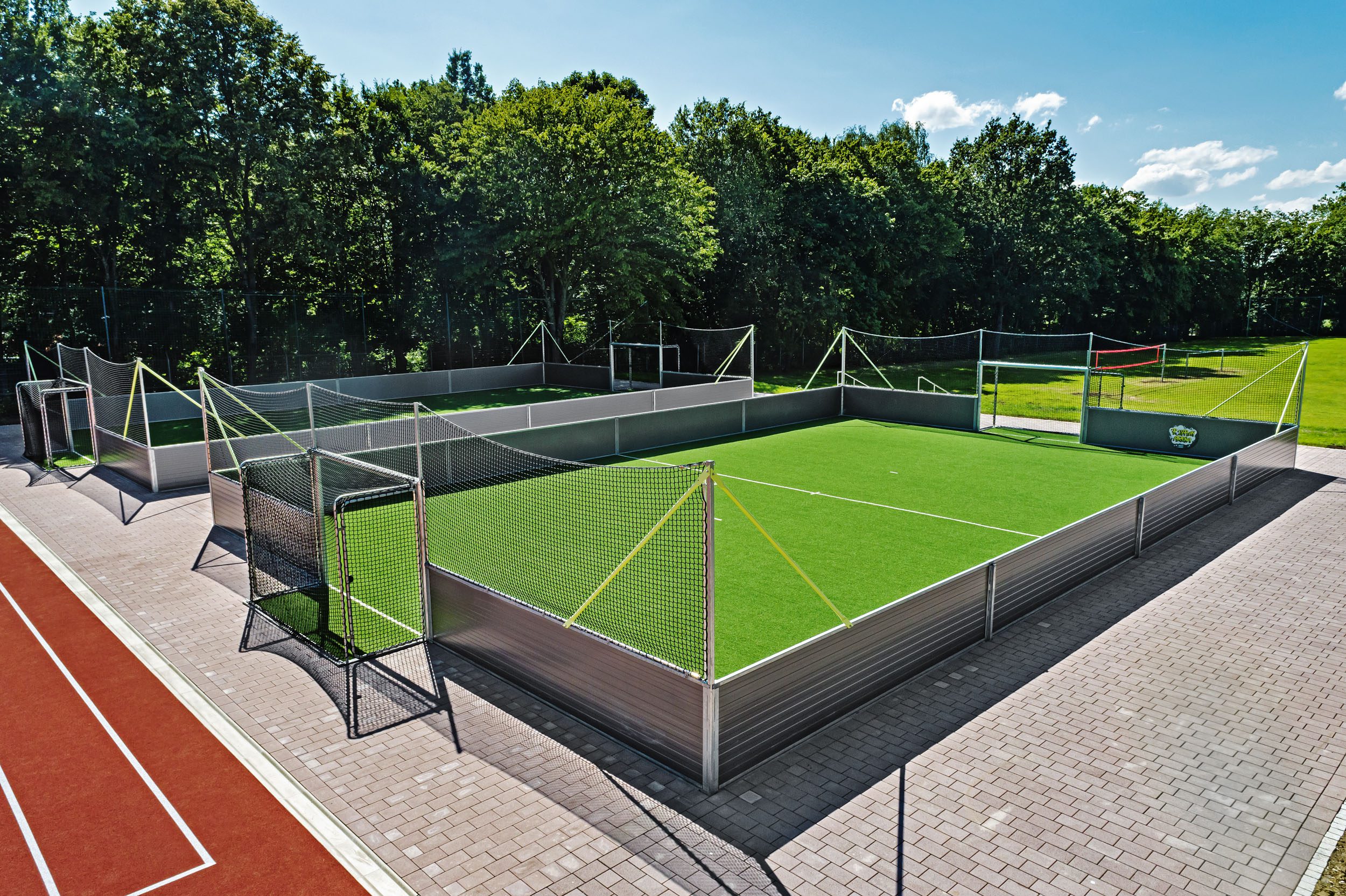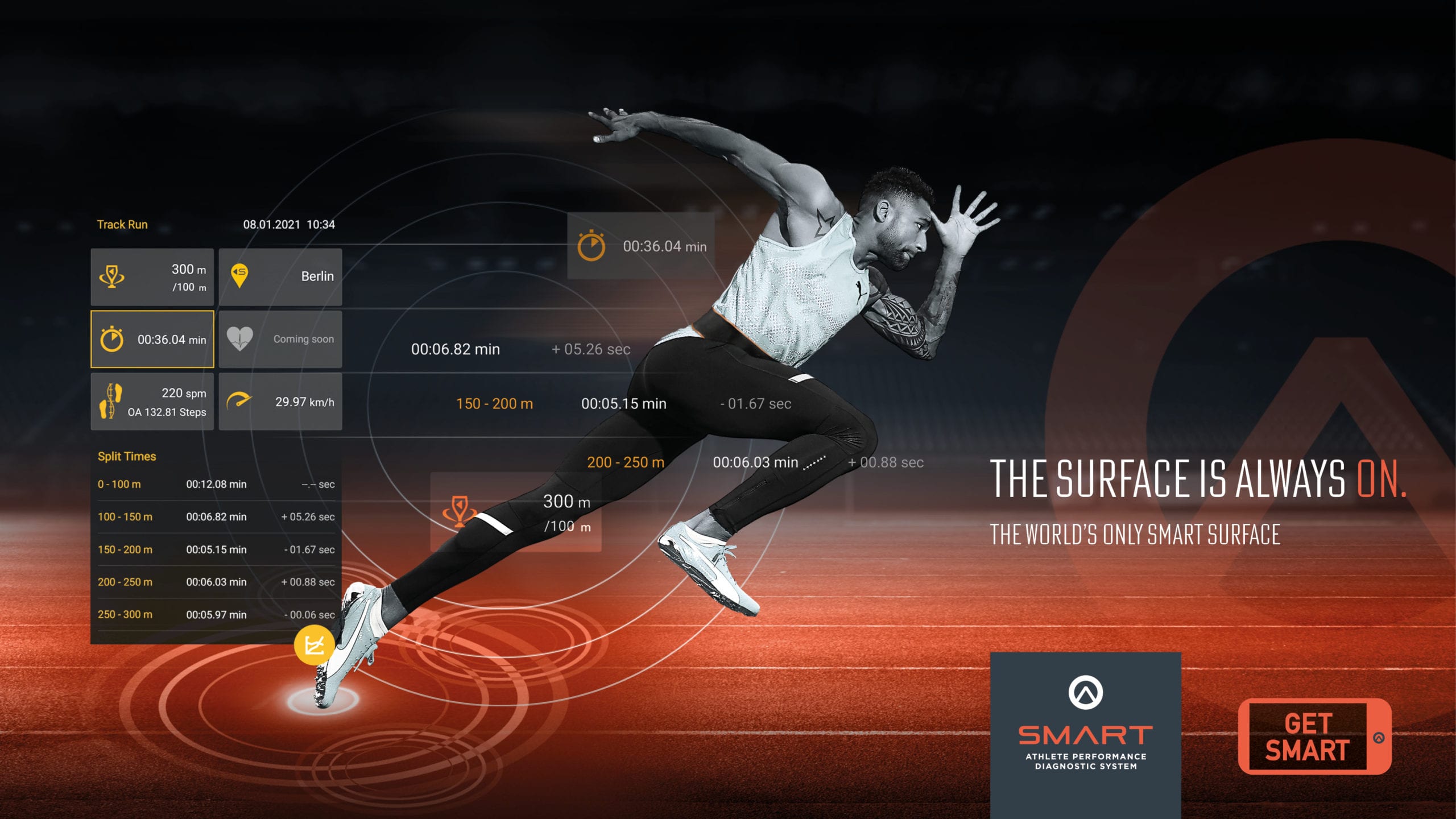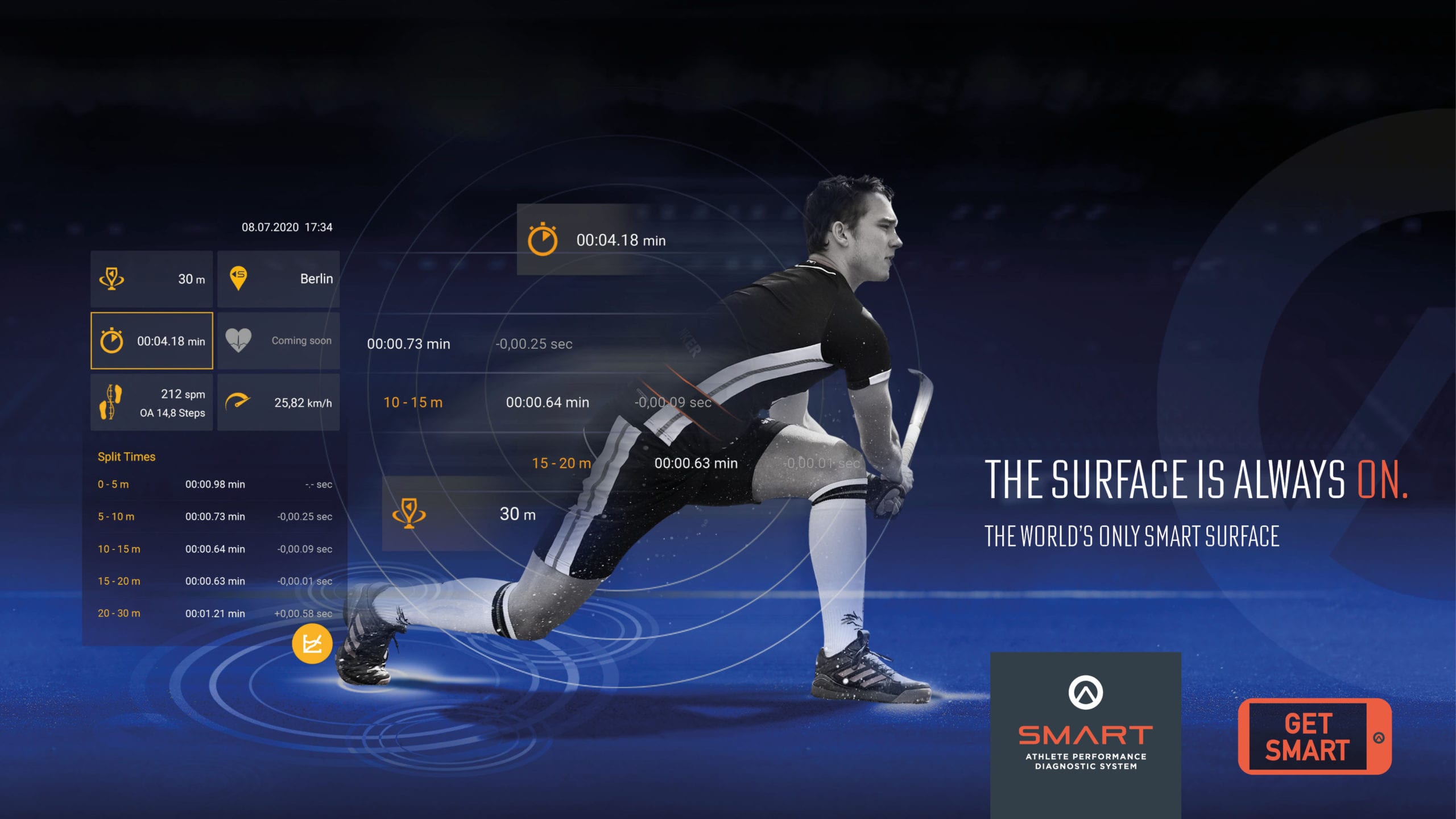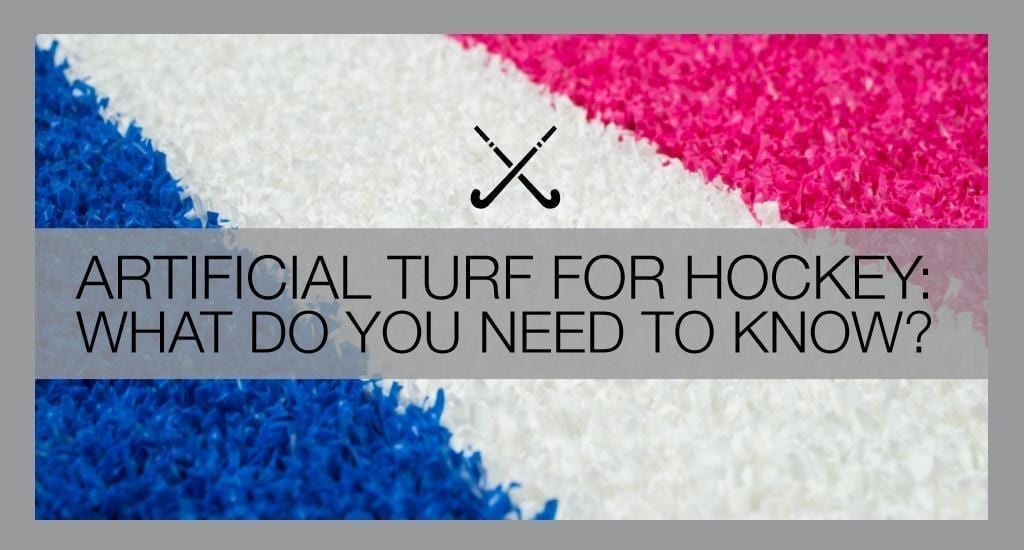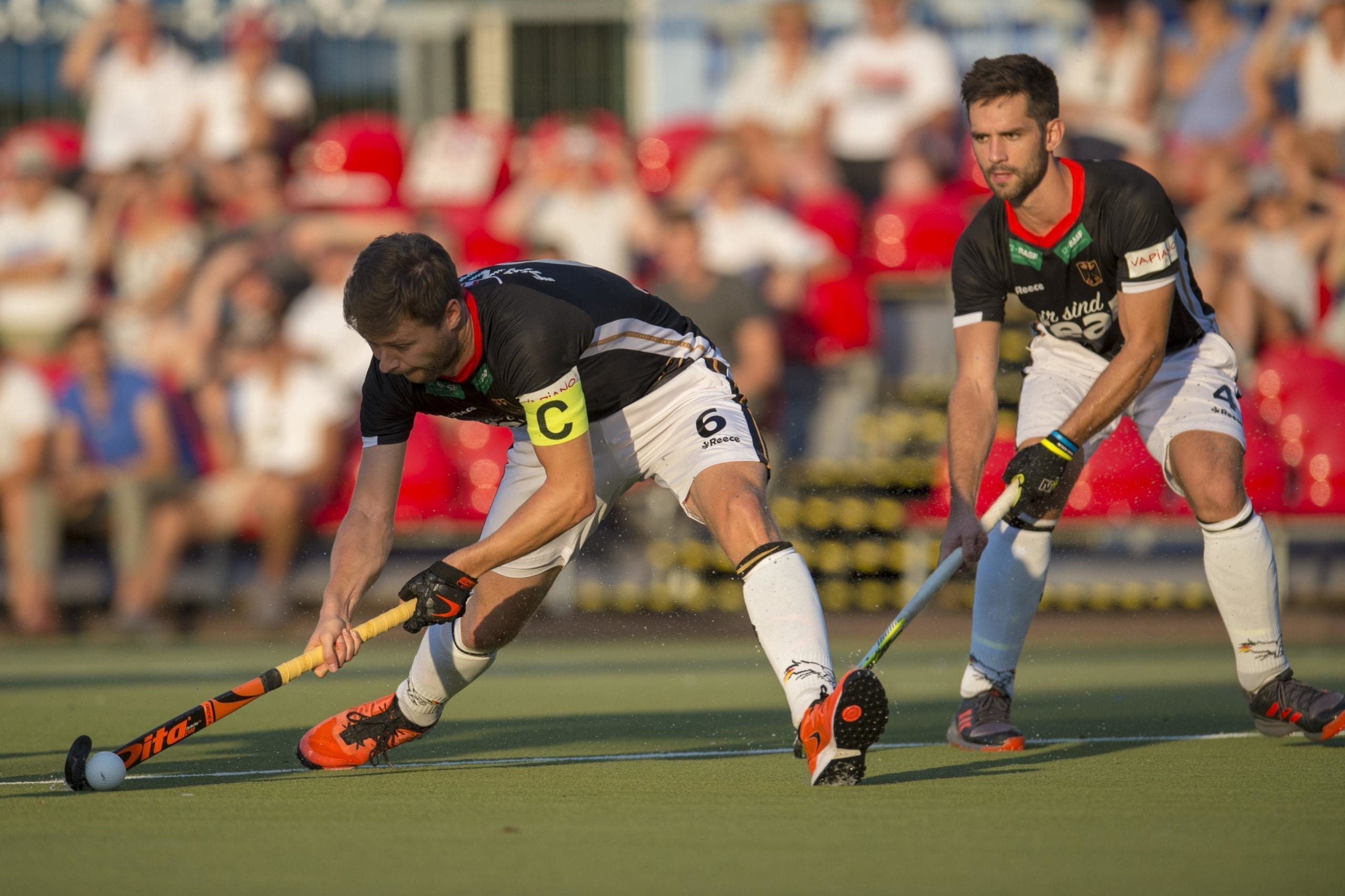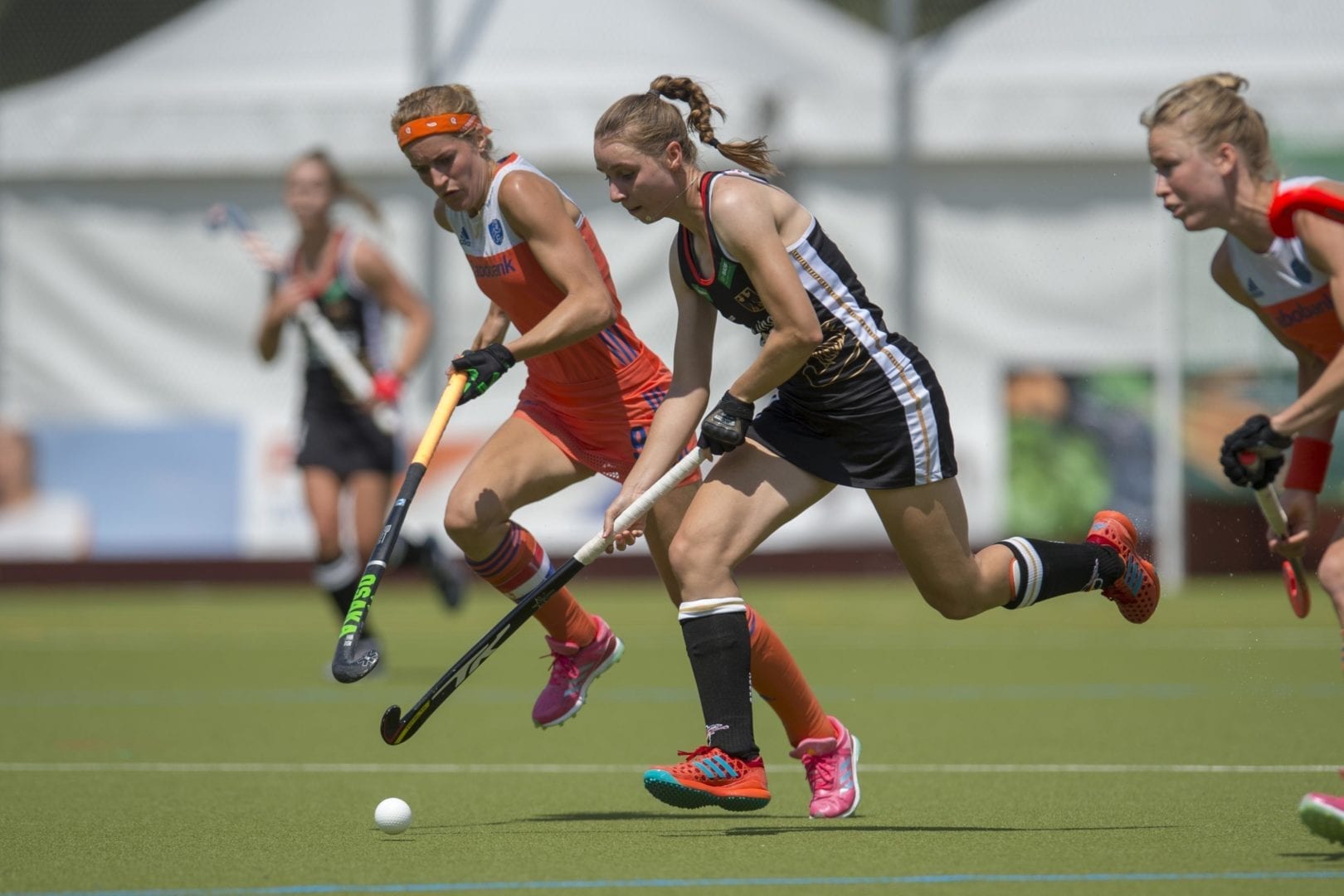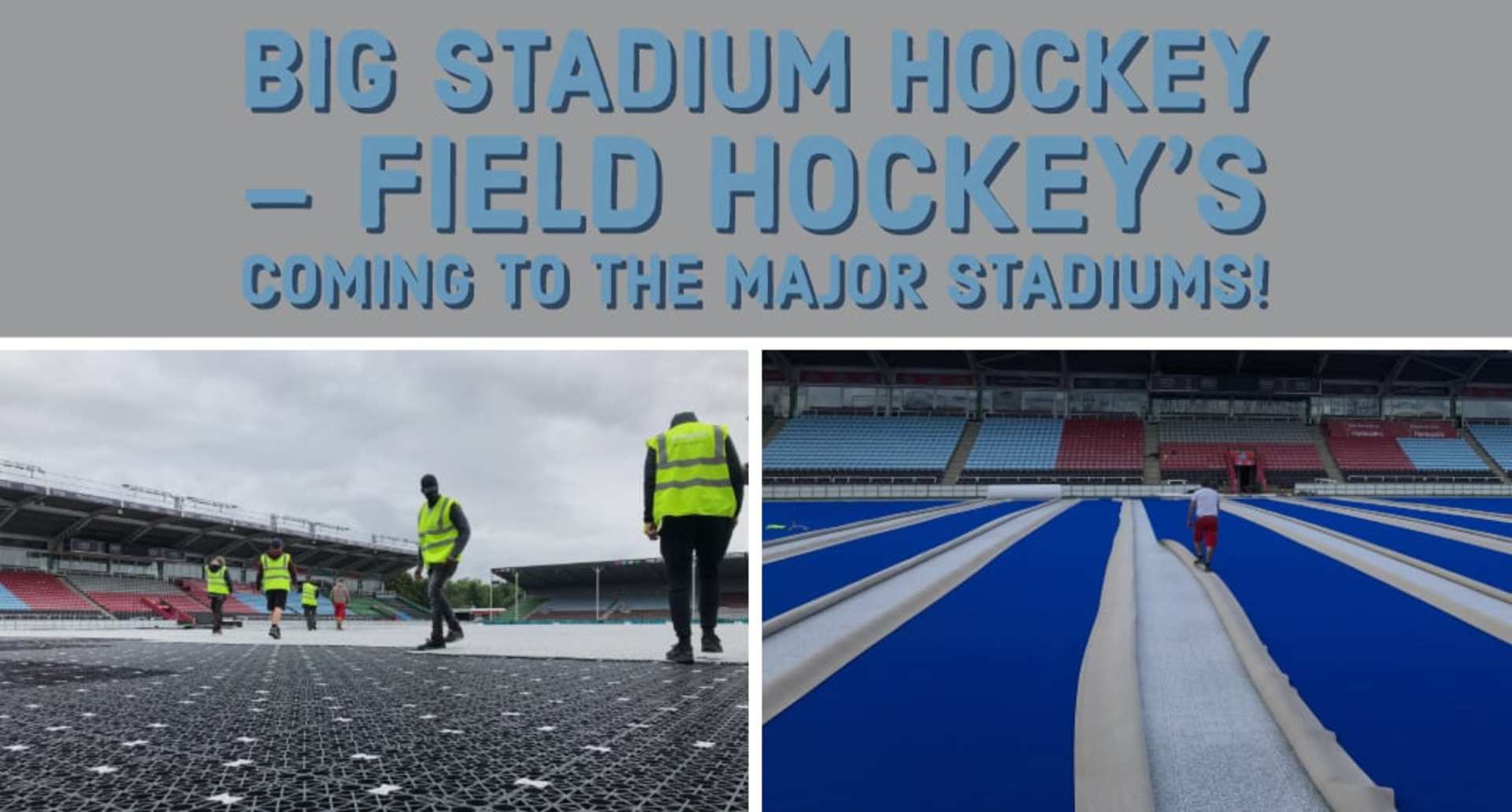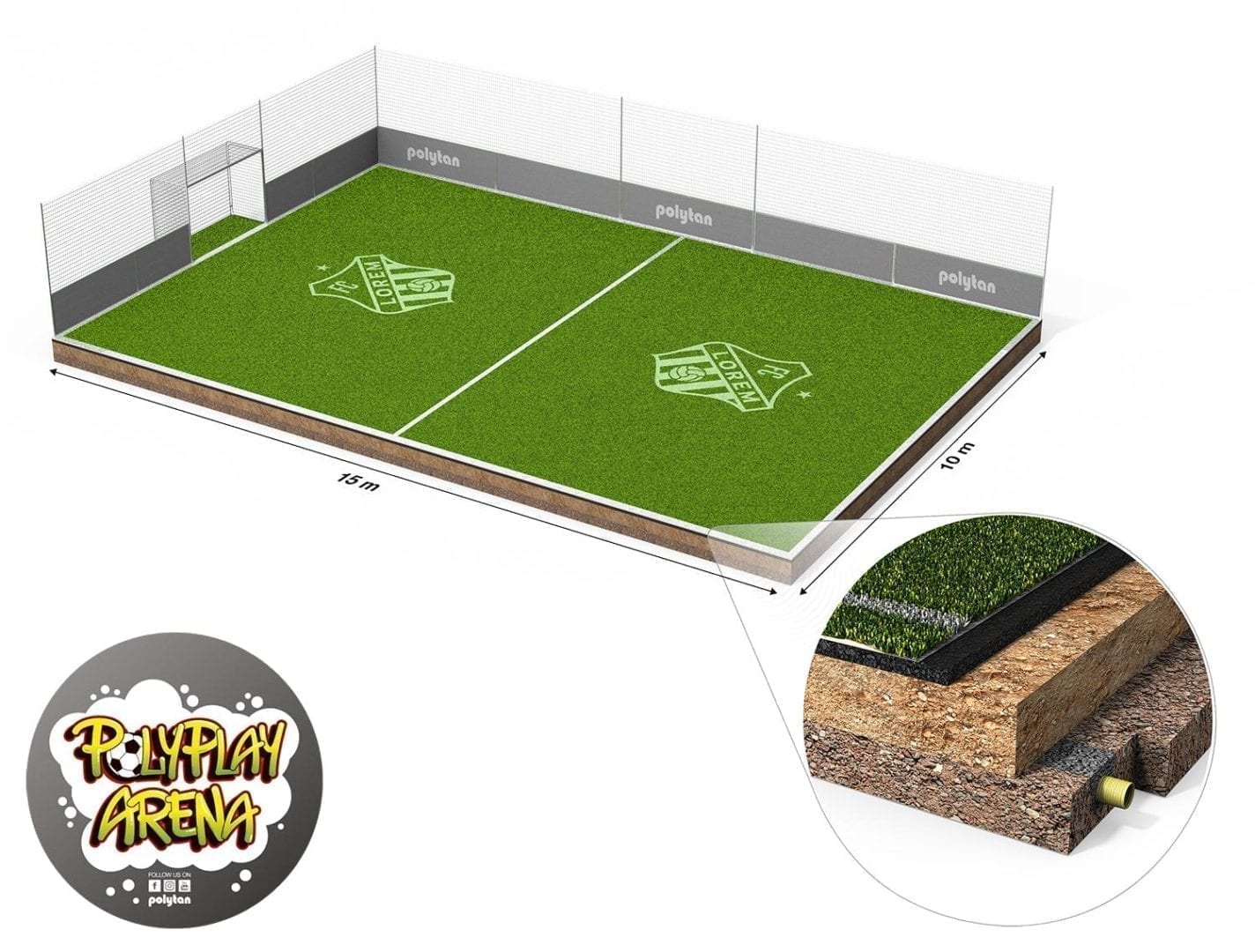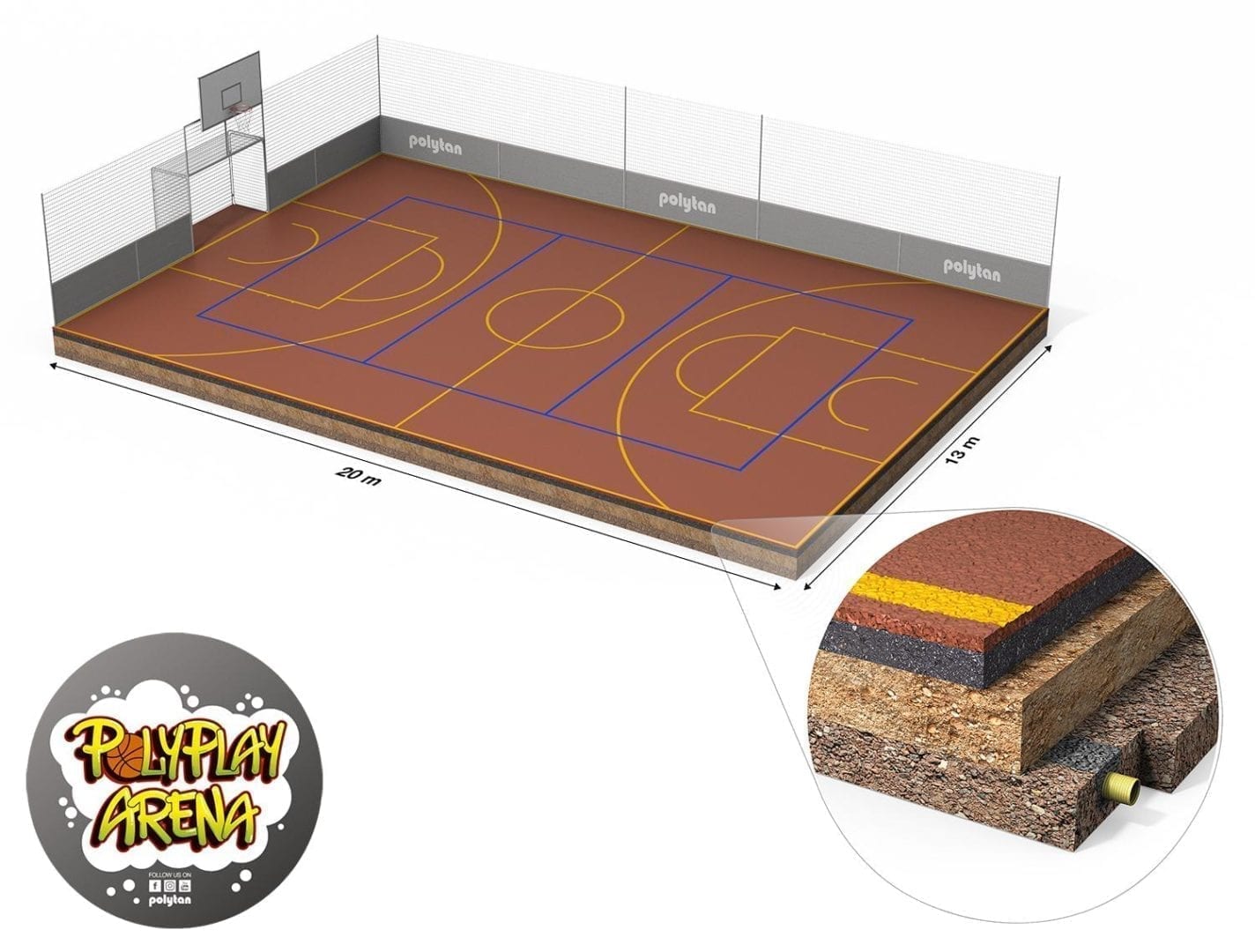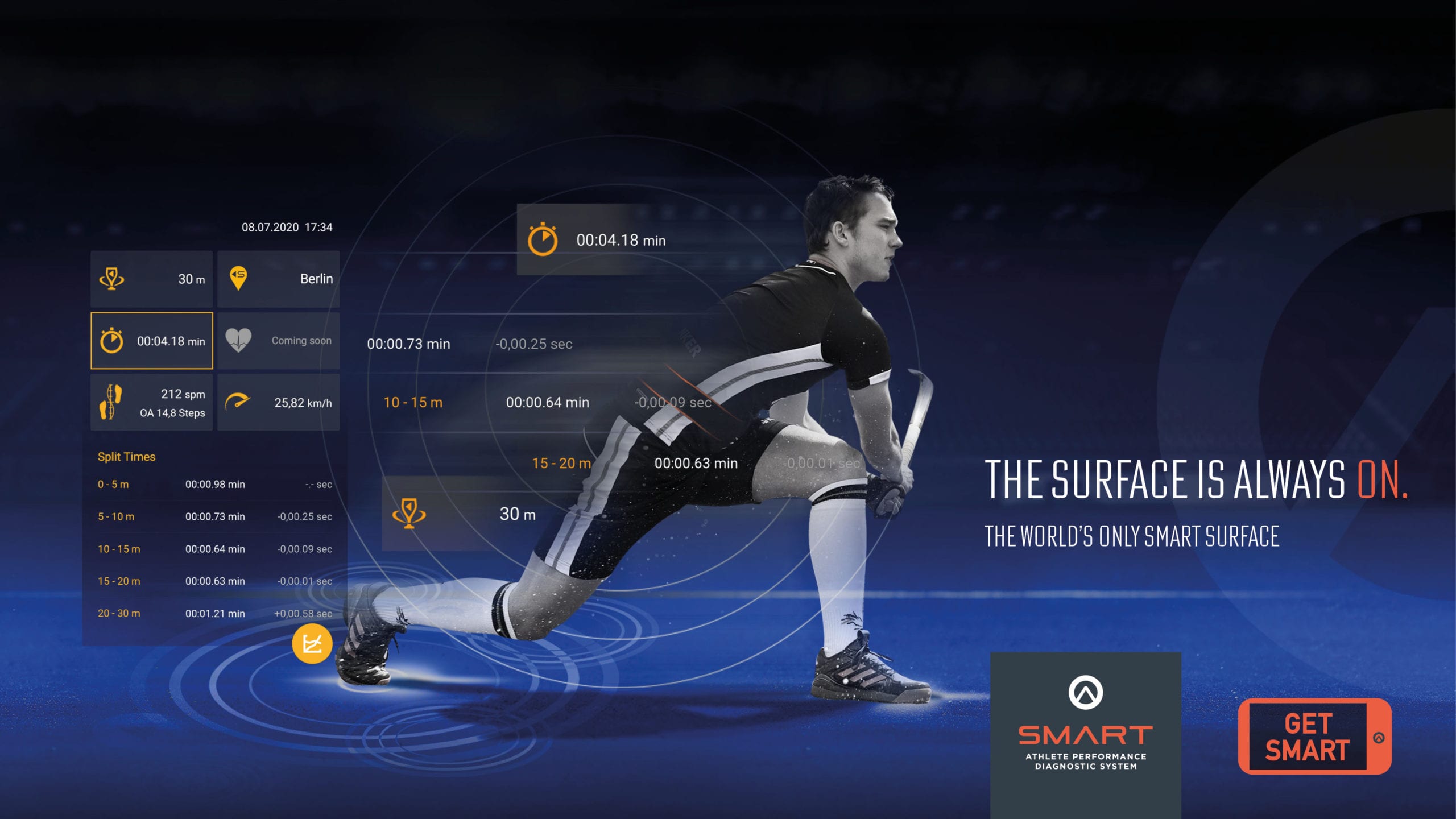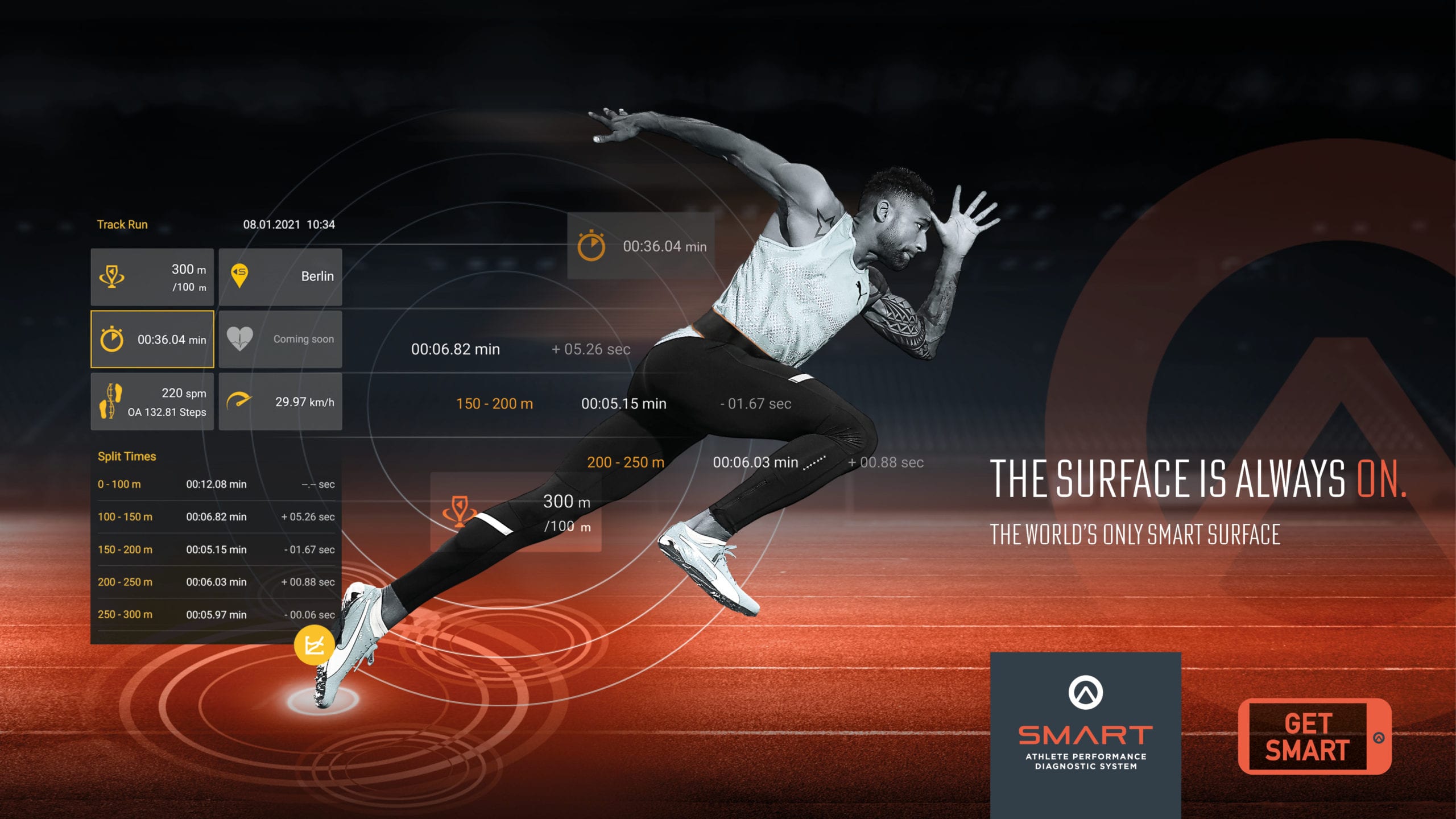Hockey is a traditional sport that has been played on grass for around 160 years – first on natural grass and, since the 1970s, almost exclusively on artificial grass. But what makes a good hockey field and what do clubs and planners have to consider when planning and building their own artificial turf fields?
The ball must be hit with the flat side of the hockey stick and a goal only counts if the ball was hit from the scoring circle. In addition, female hockey players must wear traditional short skirts. The first Olympic hockey tournament on artificial turf was held in 1976 in Montreal. Artificial turf and hockey have been inextricably linked ever since. Due to the more sophisticated technology and faster playing surfaces, today almost every hockey club features an irrigated artificial grass pitch.
Artificial turf. High quality and long lifespan
A modern artificial grass hockey field is the optimal basis for fast play and precise ball control. Only a perfectly coordinated, high-quality artificial turf ensures a consistently dense surface structure of the turf fibres and thus a ‘clean’ ball run throughout the entire service life.
How is an artificial turf hockey field built?
First let’s take a closer look at an artificial turf system. In principle, there are two distinct systems used for hockey: artificial turf systems with sand backfill and unfilled artificial turf systems. The former are suitable for multifunctional sports facilities such as those required by schools or sports clubs. On pitches that are reserved exclusively for playing hockey, unfilled artificial turf systems are used, which must be irrigated with a sprinkler before each use.
A wet artificial turf hockey pitch provides the perfect surface for professional field hockey competitions as the ball’s rolling behaviour can be assessed better and the players can slide without risk of injury. Compared to artificial football turf, the grass blades of hockey-specific artificial turf systems are only 11 to 14-mm long – sand-filled systems use turf with a blade height of up to 30 mm.
CoolPlus function protects against the heat
Artificial grass for field hockey was originally made of nylon. Polypropylene (PP) and polyethylene (PE) coatings were subsequently developed. Compared to nylon, PP filaments are harder and more bristle-like, which means they are more durable. PE fibres are softer and more comfortable for the players, which is why they have generally prevailed as the hockey club standard. In order to significantly reduce surface warming of our artificial grass systems through solar radiation, we have developed the CoolPlus function. This technology uses infrared-reflecting pigments in the formulation of the grass filaments. This improves the reflection of heat radiation, which means the grass surfaces warm up more slowly and to a lesser extent overall. As a result, the irrigation cycles of the artificial turf hockey pitch can be extended, and water consumption can be reduced. This saves on costs and protects the environment.
Before constructing an artificial grass pitch, make sure to plan carefully
For many clubs and municipalities, the construction of a sports field represents a great challenge. As well as procuring funds, there are a number of other factors to consider during the planning process. Just as when constructing a new building, the subsoil must be analysed for compaction, load capacity, water permeability and evenness. If the condition of the substrate is up to standard, it is time to install the base layer. Depending on the intended use, there are two different installation options. If a multifunctional surface is required, which is suitable for sports as well as events such as concerts, we recommend a 15-mm thick asphalt layer and an equally thick, shock-absorbing in-situ elastic layer. If the artificial grass is also used as a multifunctional field for other sports or as a training field, there are various interesting alternatives that use our bonded elastic in-situ base layer.

Standard hockey field size
The standard size of a hockey field in Germany is determined by the German Hockey Federation – Deutschen Hockey-Bund e.V. (DHB) – and must be 91.40 x 55 m, otherwise the federation will not grant approval. In addition, a surface-level outlet is required around the playing field, Behind the baseline there are 3 metres of artificial turf plus 2 metres of additional space, which is often paved. Behind the side lines, an additional 3 metres of artificial turf are ideally recommended, in addition to a 1-metre run-off area. If the hockey field is used to host national and international tournaments, these requirements are binding. Retrofitting is usually costly and laborious. In addition to the main playing field markings, the DHB also recommends further markings, such as the four small-field striking circles and a three-quarter striking circle. If the sports field is also used for football, for example, the ‘primary use’ sport should be marked out in white lines and the ‘secondary use’ with yellow lines. Additional markings for further sports should be in blue and red. Polytan supports its customers throughout the entire planning phase and also assists in the selection of the appropriate system and creation of the line markings. Please do not hesitate to contact us if you have any questions.
Why is the artificial grass used for hockey pitches blue?
The 2012 Olympic Games in London sparked a revolution in the sport of field hockey. The colour of the artificial grass changed from green to blue. And, as if that was not enough change, the organisers of the Riverbank Arena had the perimeter of the pitch finished in bright pink. The choice of colour had its reasons. The blue playing field provided a significantly higher contrast for the white lines and ball, thus giving TV viewers a better view at home. Visitors in the stadium were also able to follow this fast game with a small ball better, which also changed colour from white to yellow to achieve the perfect contrast. The colour changes impressed spectators, players and organisers alike, and so a yellow ball on a blue background is now the standard in professional tournament hockey. For this reason, the number of newly built artificial grass hockey pitches with blue playing fields and coloured borders has risen significantly – especially for pitches that host international competitions. So if you want to keep up with the times, you’ll want an artificial turf in blue. As for the border, there are no colour limits. For example, the University of Edinburgh has opted for red artificial grass for their hockey field. In Valencia, they have opted for orange, while at the Rio Olympic Games 2016 they opted for light green; light blue is also another practical option.
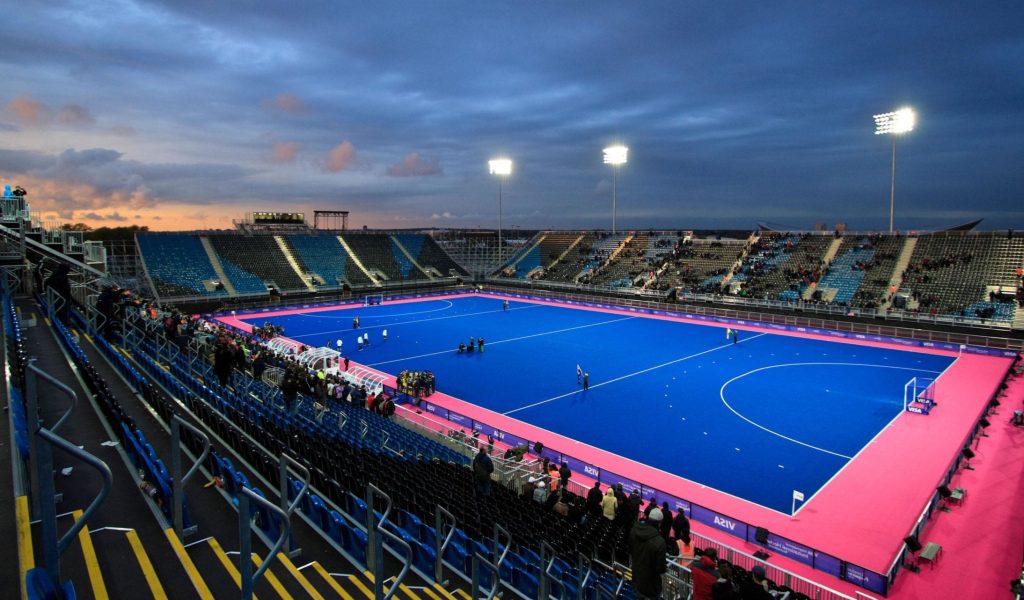
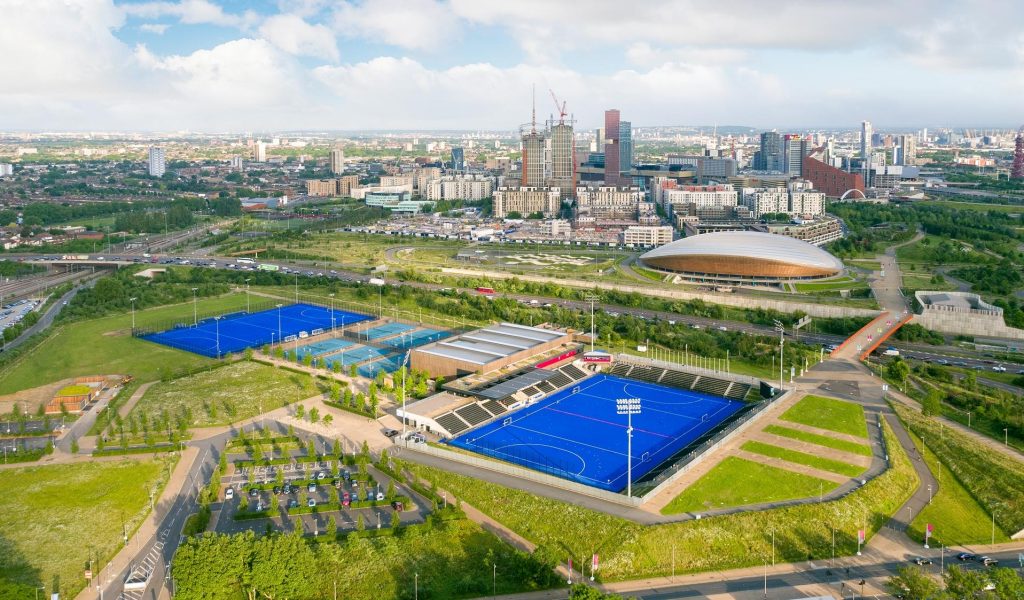
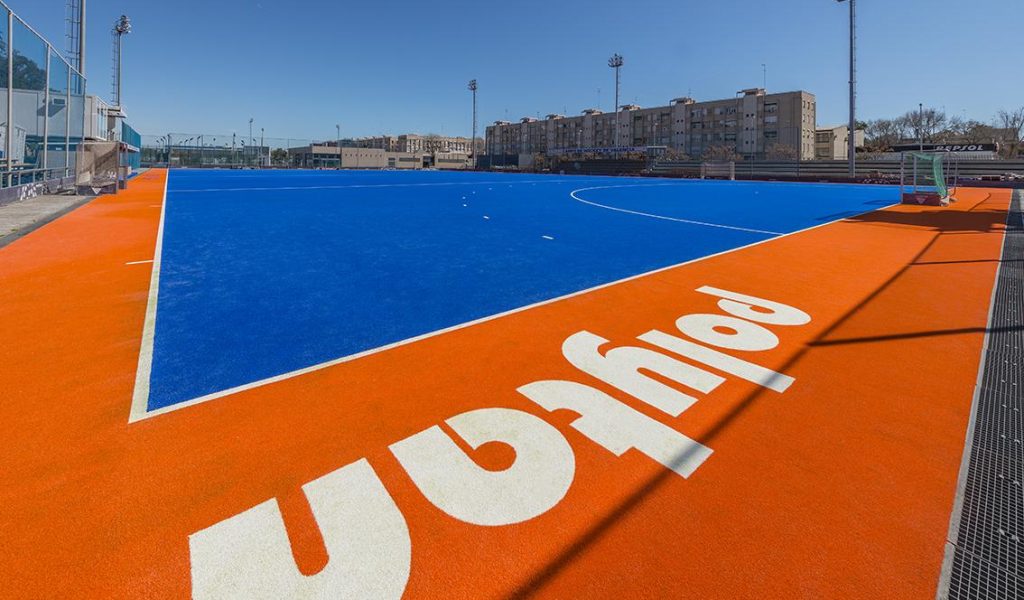
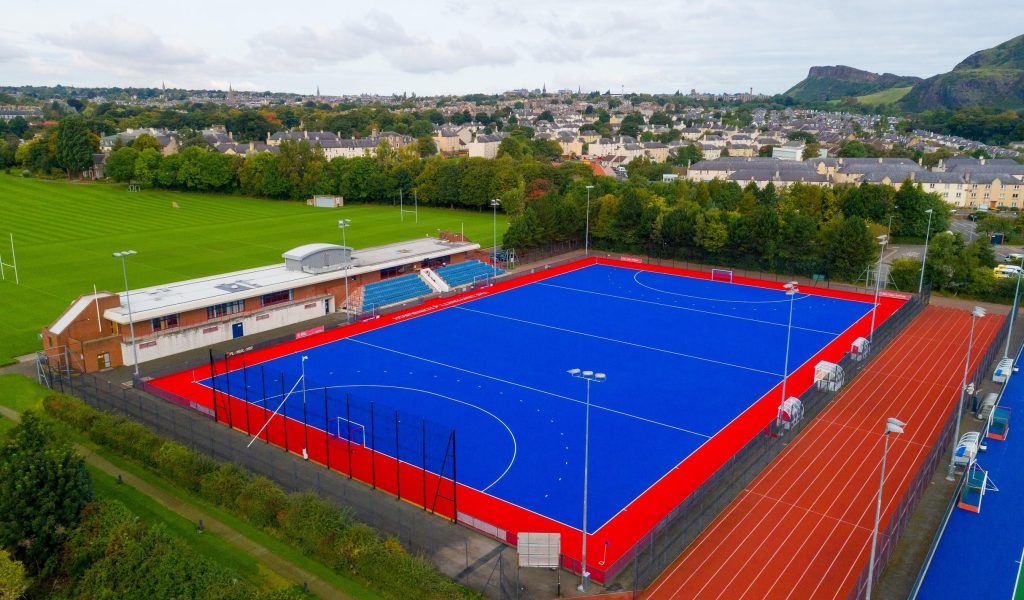
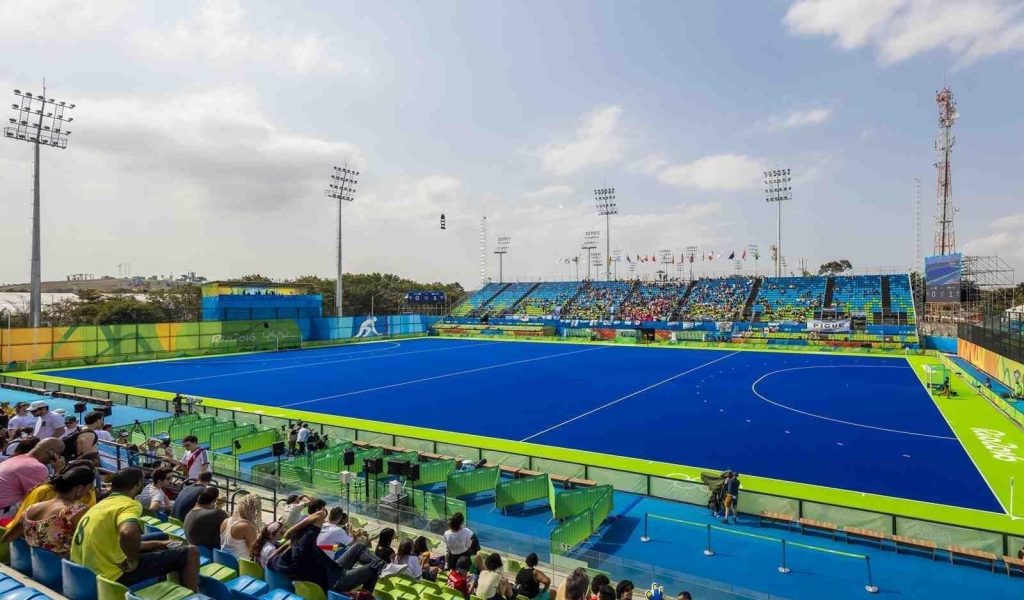
How much does a new artificial grass hockey field cost?
The cost of creating a new artificial grass hockey field depends on many factors. The substructure should, for example, be built in such a way that it retains its shock-absorbing effect even after (several) repairs to the top covering, so that it does not have to be replaced as well. Here, Polytan relies on elastic (base) layers made from recycled rubber granules. In comparison to prefabricated elastic mats, for example, this option guarantees consistent damping over decades. Depending on the chosen product, the prices for artificial turf also vary. When building a completely new artificial grass field, paved areas, irrigation, floodlighting systems and ball fences must also be taken into account. For the construction of a new artificial hockey pitch, the total cost could therefore be estimated to reach at least 450,000 Euro.
Who helps to finance sports facilities?
No matter whether it’s a matter of a renovation or a new construction, a new artificial grass pitch undoubtedly represents a big challenge for sports clubs. Nevertheless, there are nationwide funding opportunities that vary from state to state – because sports facility funding is a matter for the individual state in Germany. In North Rhine-Westphalia, for example, NRW.BANK offers a favourable loan for the financing of sports facilities. Generally, municipalities often provide funding for the maintenance and upkeep of sports facilities. State and municipal financing, as well as self-funding, is also an option under the right conditions. Calculations should also take into account running costs such as continuous artificial grass maintenance. With proper care and maintenance, the life span of an artificial grass hockey pitch under average use can be up to 15 years.
Correct care is rewarded with lasting joy
Professional care is therefore indispensable to the lifespan. Regular removal of coarse debris and natural materials, for example by using a blower, is particularly important. This is because dirt that is crushed during play and sinks into the grass pile promotes the formation of algae. In addition, we recommend the purchase of a sweeping machine for optimum artificial turf care. Once or twice a week, it can be used to clear the playing field of coarse dirt such as the leaves from nearby trees. In addition, intensive wet cleaning should be carried out in the spring by an RAL-tested specialist company (such as Polytan). This particularly intensive artificial turf care ensures that even smaller dirt particles in the synthetic turf pile are systematically rinsed out under high pressure.
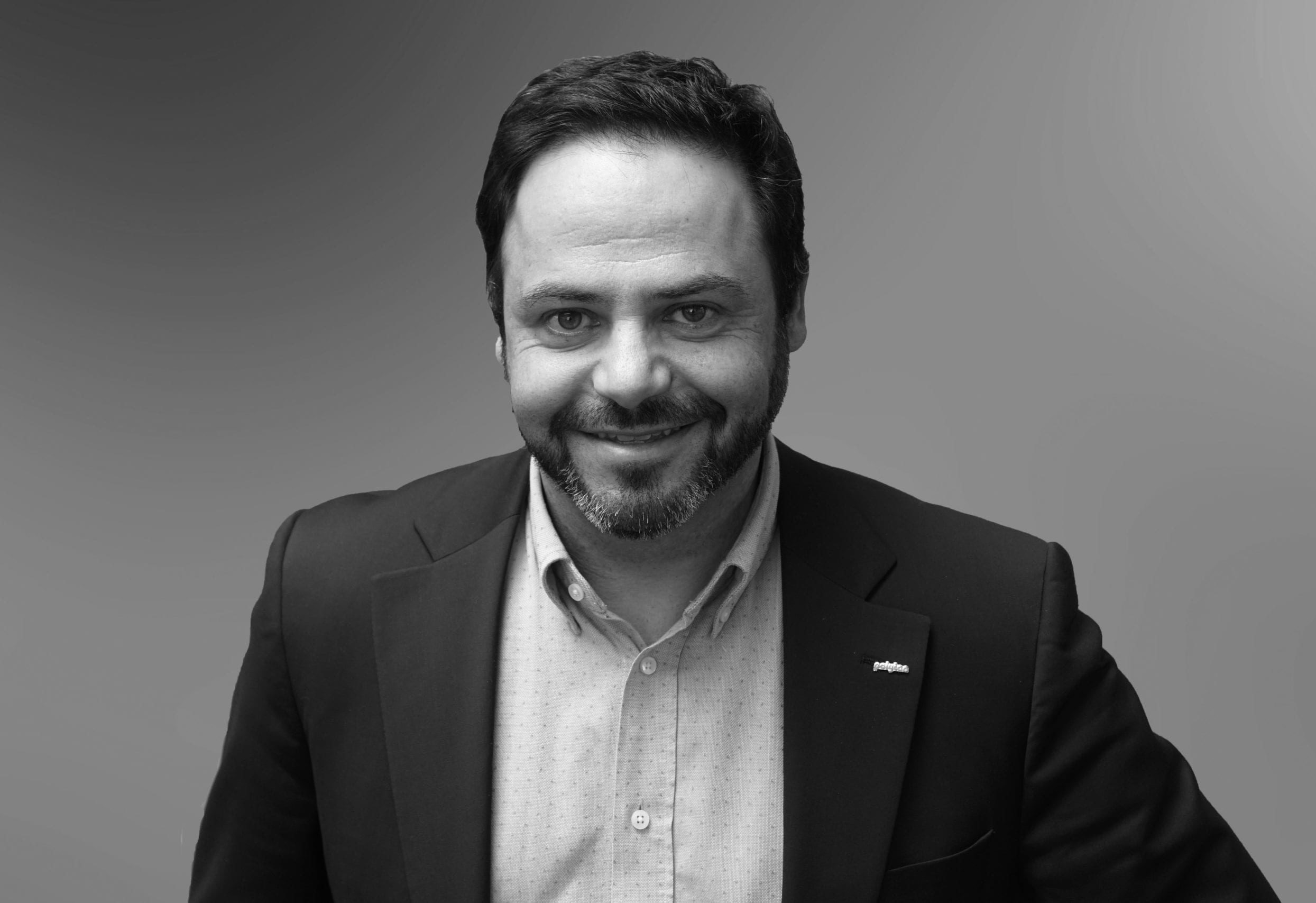
Winter field hockey
During the winter months, field hockey is often played in indoor sports halls. Nevertheless, in principle it is also possible to use open-air artificial turf hockey fields during the cold season. The most effective, but also the most cost-intensive solution is an artificial turf hockey field heating system, such as the one installed for the first time in Germany under the hockey field at Grünwalder leisure park. With this system, not even frost can make the Polytan artificial turf field unplayable. If you are looking for an artificial turf that can also be played on in winter, the German Hockey Federation recommends a 14-mm thick all-plastic turf system without sand filling. These fields are low-maintenance and easier to clear of snow during the colder months (even without underfloor heating). Sand-filled artificial turf systems compact faster in wet and cold temperatures and tend to freeze up, which increases the risk of injury to players.
Conclusions: artificial turf playing fields for hockey
The correct preparation for the planning of an artificial grass hockey pitch is not rocket science and should not discourage a sports club from making the investment. As an artificial turf manufacturer with many years of experience in sports field construction, we help you right from the planning phase and support you in making all the key decisions. Whether you ultimately opt for an unfilled all-plastic turf such as our Poligras Platinum CoolPlus or Poligras Mega CoolPlus (neither of which use Polytan granules) or for a multi-functional turf filled with sand such as our Poligras Terra CoolPlus, depends on your individual wishes and requirements. Important planning factors must be taken into account right from the substructure, as this has a significant influence on the quality and follow-up costs of the overall system. Depending on the federal state, different funding programmes are available for financing; together with the state sports associations, we regularly inform you about these in seminars. Whether you opt for blue, red, traditional green or even anthracite or black artificial grass, is purely a matter of taste. Technically, however, it should be at the highest level to ensure long-lasting playing fun!
